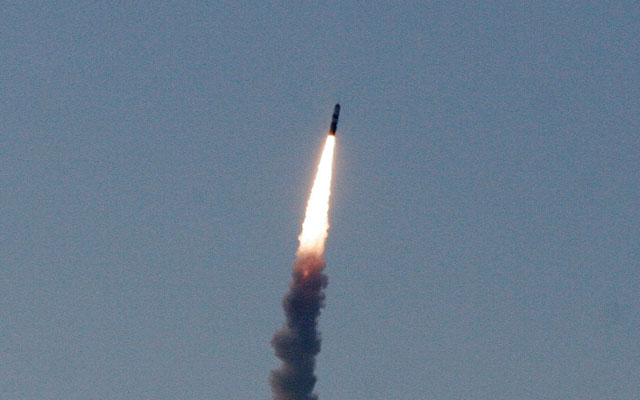Senator Carl Levin (D-MI), Chairman of the Senate Armed Services Committee (SASC), recently concluded that there is “no validated military requirement” for a proposed East Coast missile defense site. While some military leaders agree with his conclusion, the fact remains that the East Coast is less protected than the West Coast under President Barack Obama’s missile defense plan.
The incomplete coverage of the East Coast should be a primary concern for Congress, as all Ground-Based Midcourse Defense (GMD) interceptors are currently located on the West Coast to counter the North Korean threat. Iran remains a concern, and an East Coast missile defense site would mitigate Iran’s growing ballistic missile capabilities. General Robert Kehler, Commander of the U.S. Strategic Command (STRATCOM), reiterated this point when he told the SASC, “I am confident that we can defend against a limited attack from Iran, although we are not in the most optimum posture to do that today.… [I]t doesn’t provide total defense today.”
The key word is “limited,” and if the Pentagon has already predicted that Iran may be able to test an intercontinental ballistic missile (ICBM) by 2015, the U.S. should be proactive and get ahead of the threat by shoring up the East Coast.
Previous leaders of this country repeatedly recognized the need for an additional missile defense site. President George W. Bush planned to deploy Ground-Based Interceptors (GBIs) in Poland, but President Obama cancelled the initiative in favor of a different interceptor known as the Standard Missile-3 (SM-3) Block IIB. The differences between these two interceptors are less important than the similarity they shared in purpose—to better protect the East Coast against Iran’s ballistic missile program. Despite these initiatives, President Obama eventually cancelled plans to deploy the SM-3 Block IIB to Poland altogether. As a result, the East Coast will remain vulnerable for the foreseeable future.
While interceptors on the East Coast would increase the U.S.’s ability to defend itself from North Korean or Iranian ballistic missiles, the need for radar deployment is paramount. The Missile Defense Agency should explore options for placing an X-Band radar site on the East Coast in order to better the performance of current interceptors on the West Coast.
NORTHCOM Commander General Charles Jacoby contends that “what a third site gives me, whether it’s on the East Coast or an alternate location, would be increased battle space; that means increased opportunity for me to engage threats from either Iran or North Korea.” It is important that Congress remember that providing for the common defense is one of its primary responsibilities, and the installment of an East Coast missile defense site would prove just that.
Joshua Holdenried is currently a member of the Young Leaders Program at The Heritage Foundation. For more information on interning at Heritage, please click here.





























